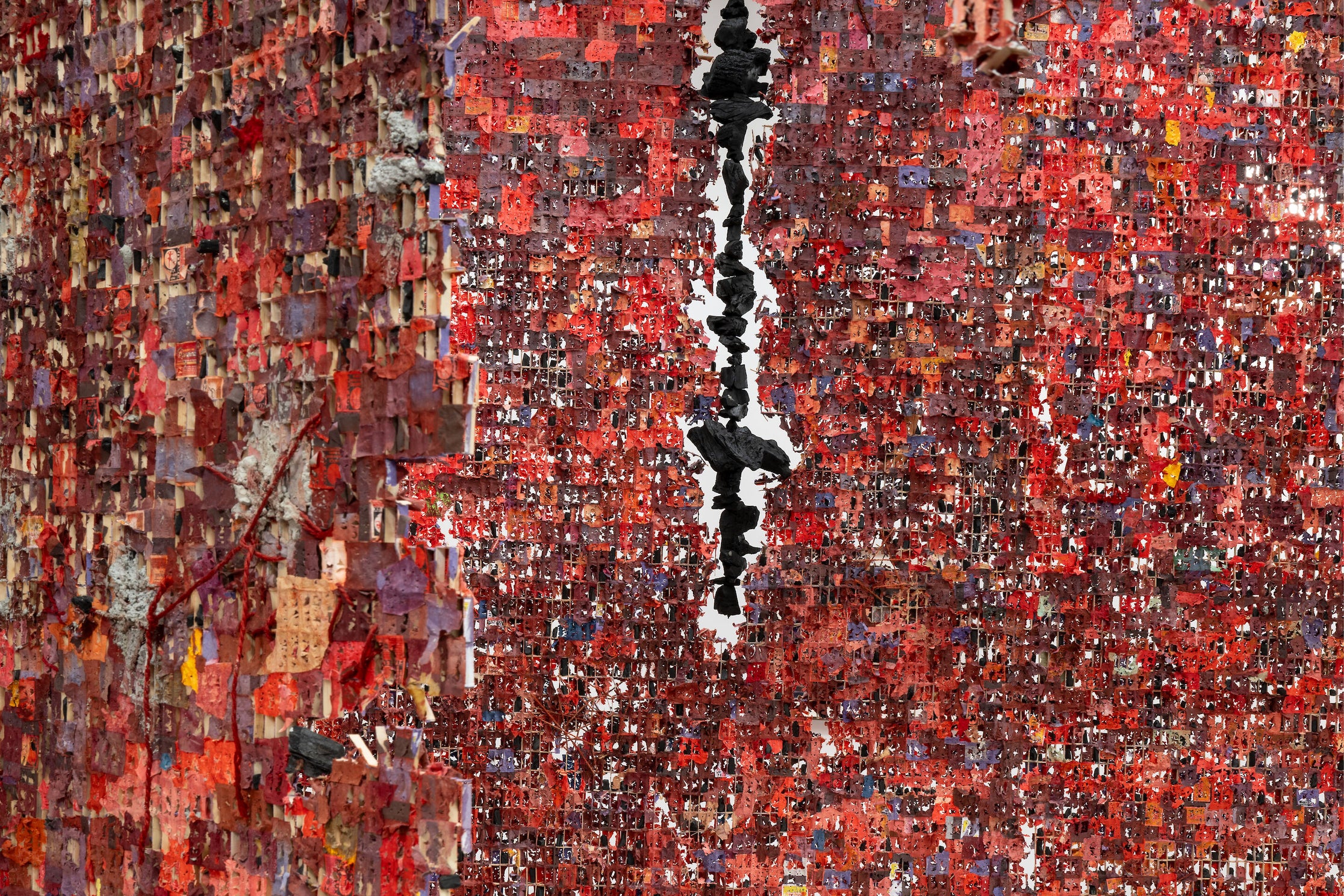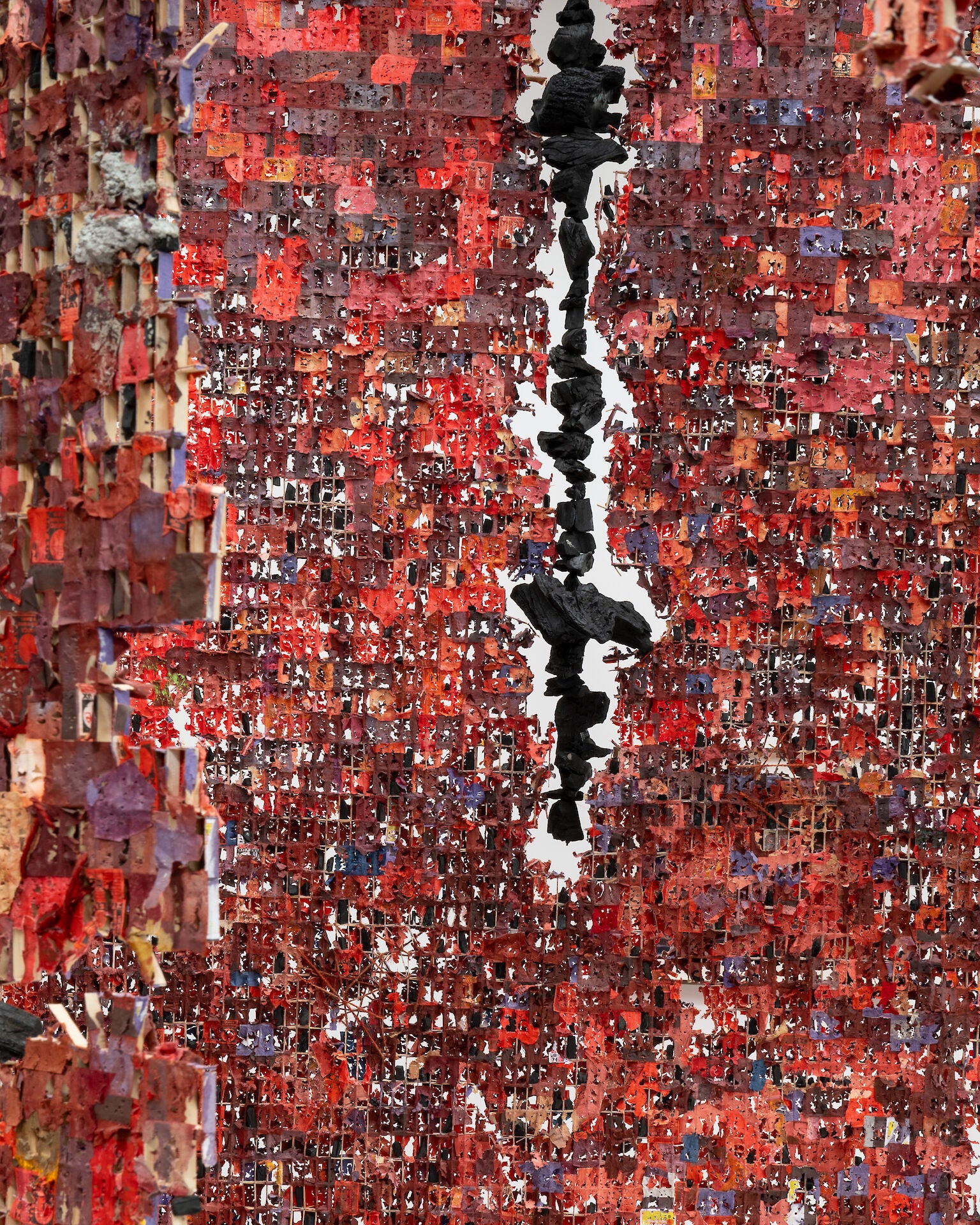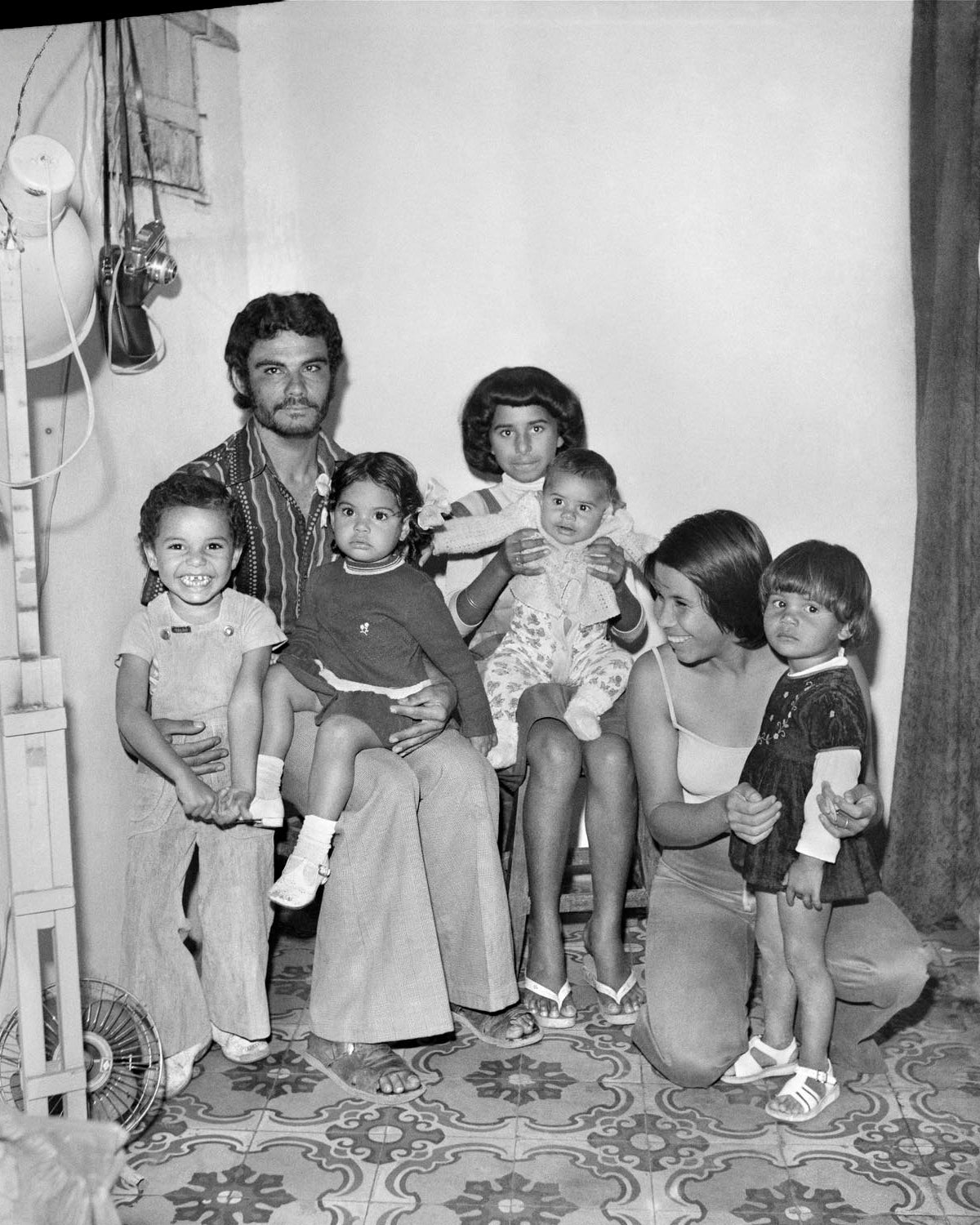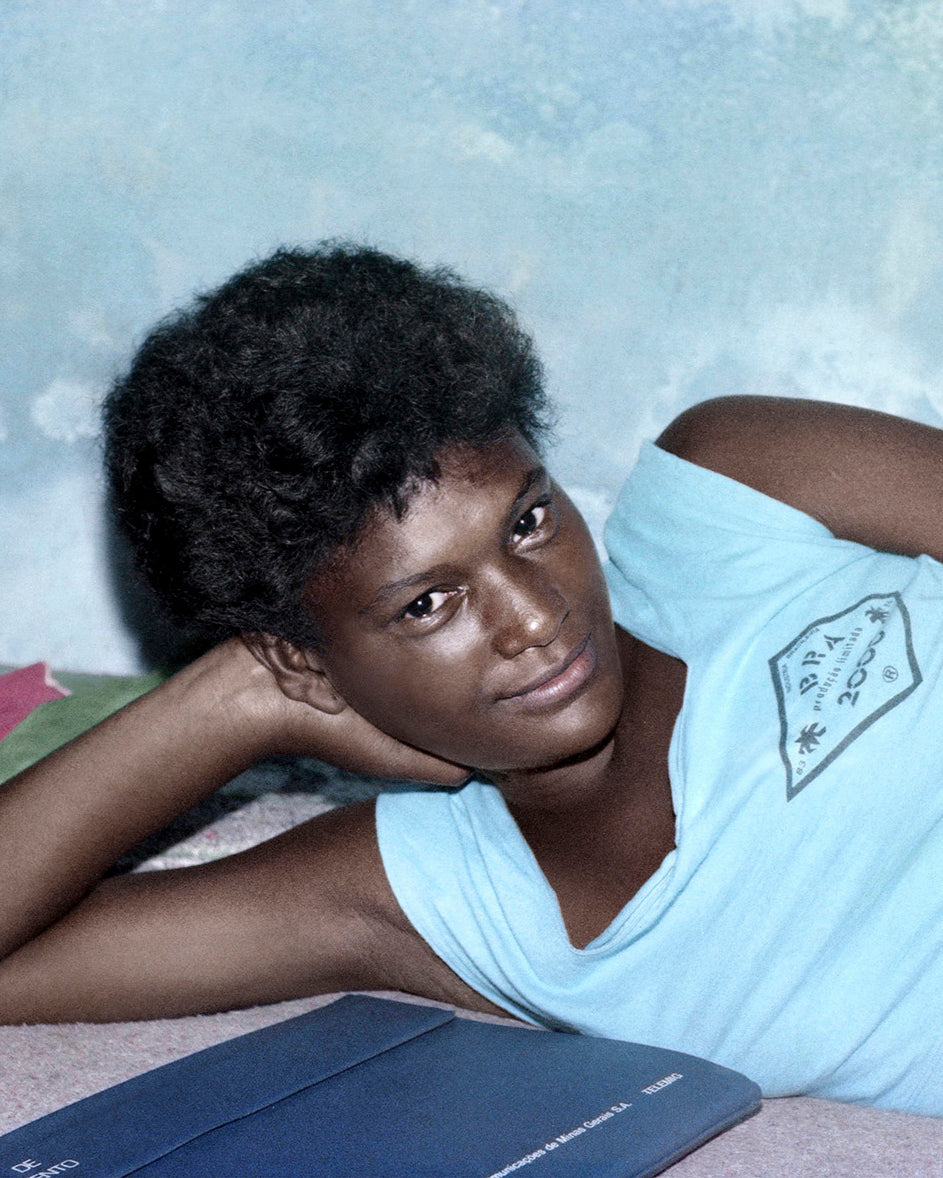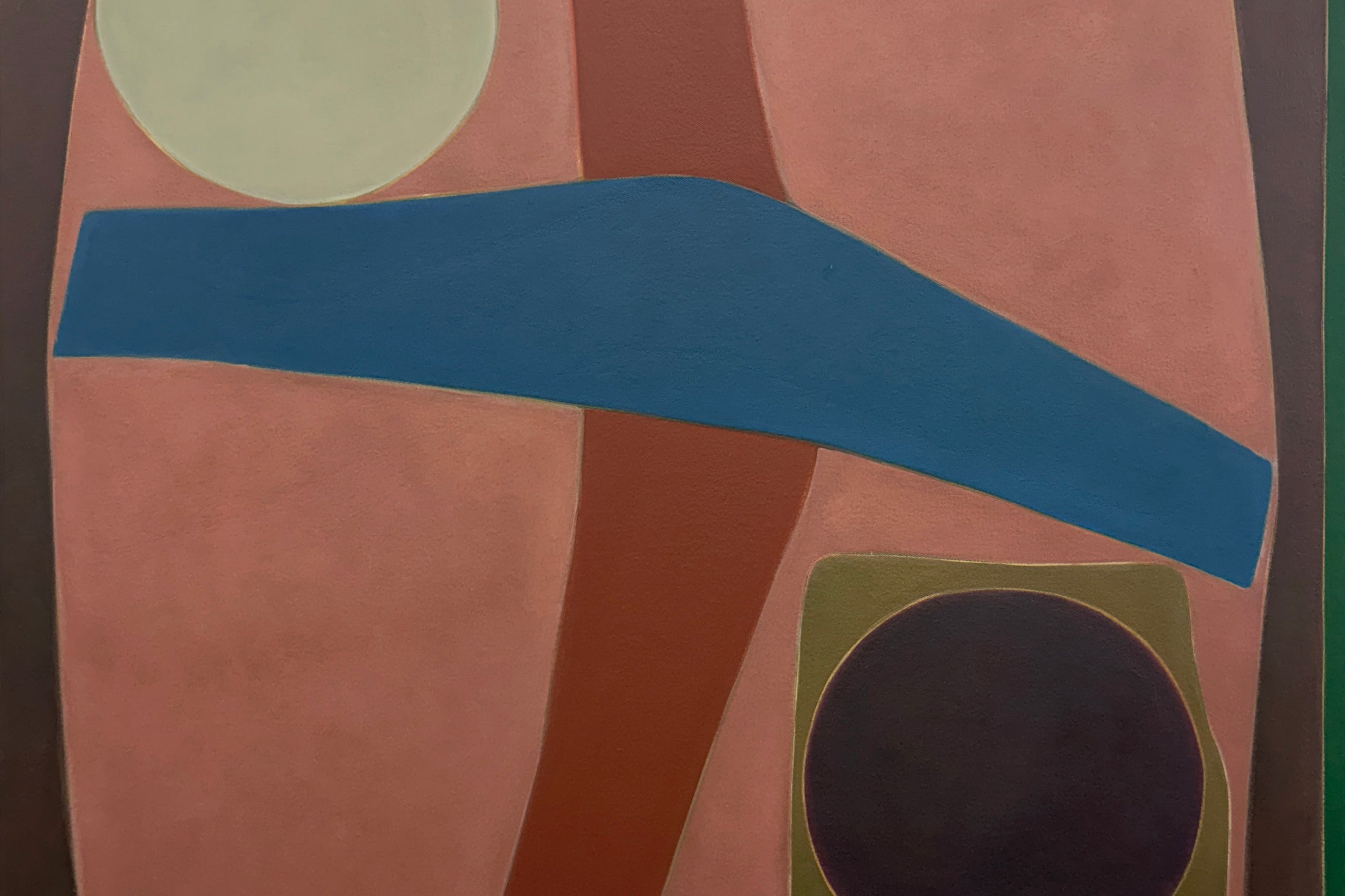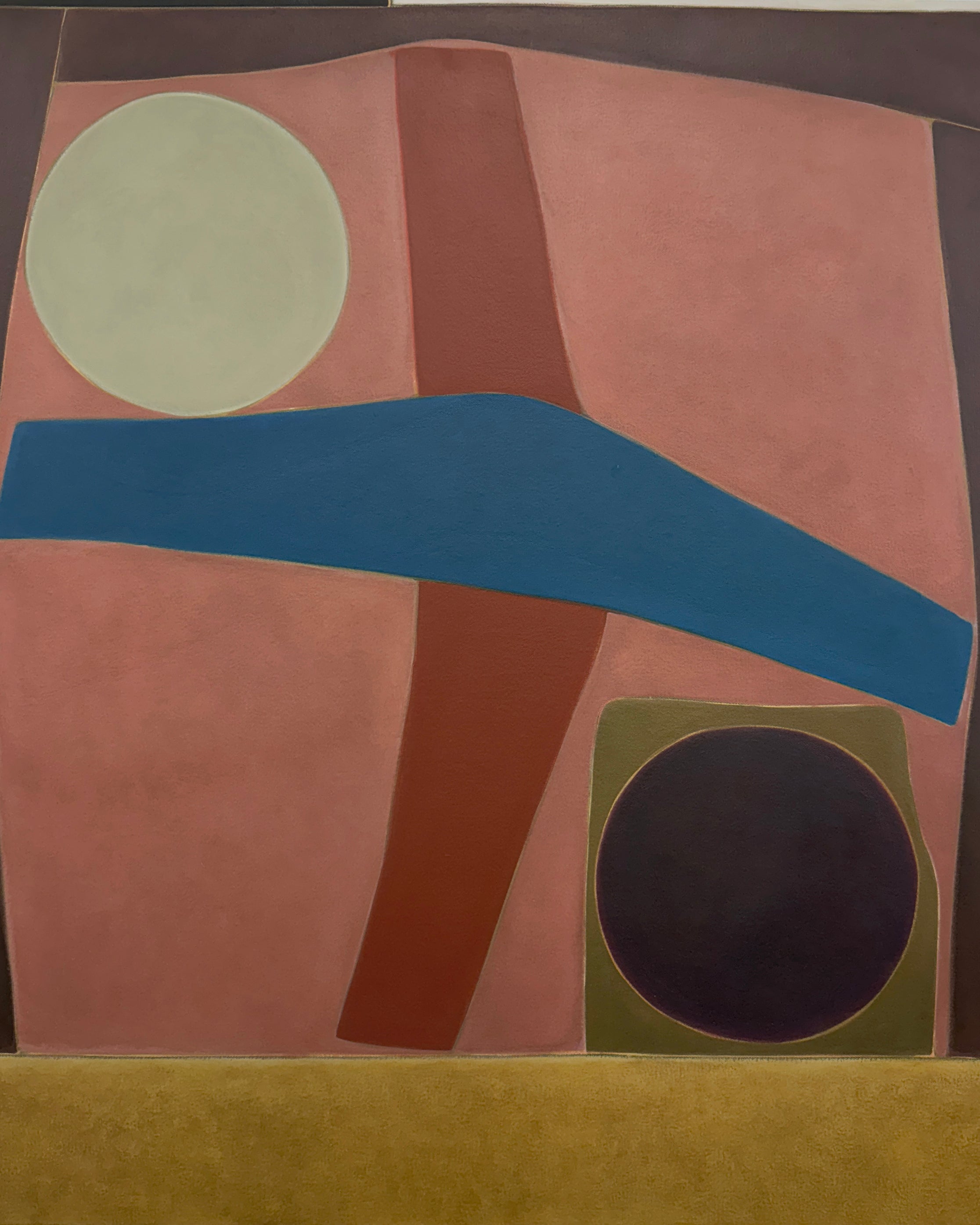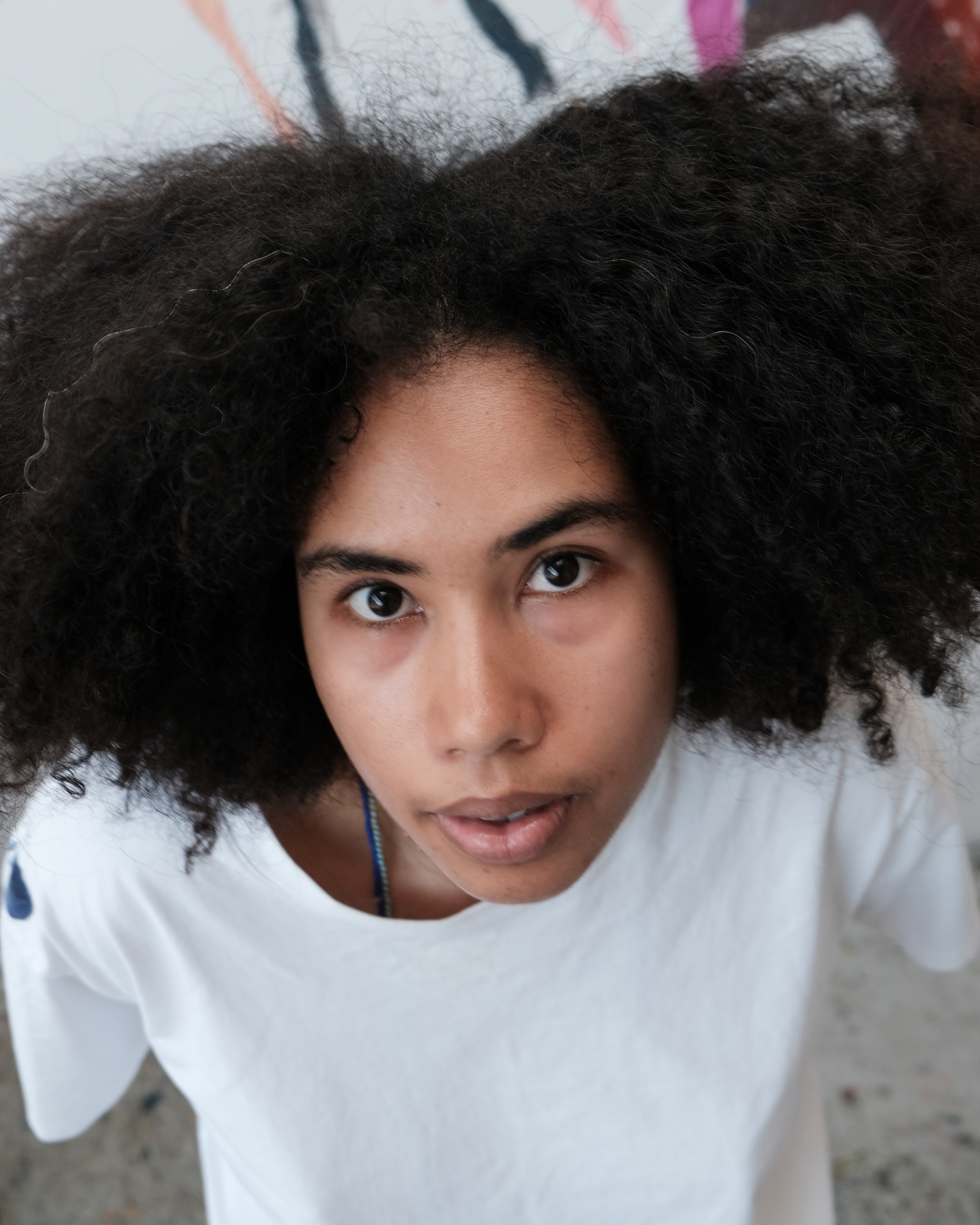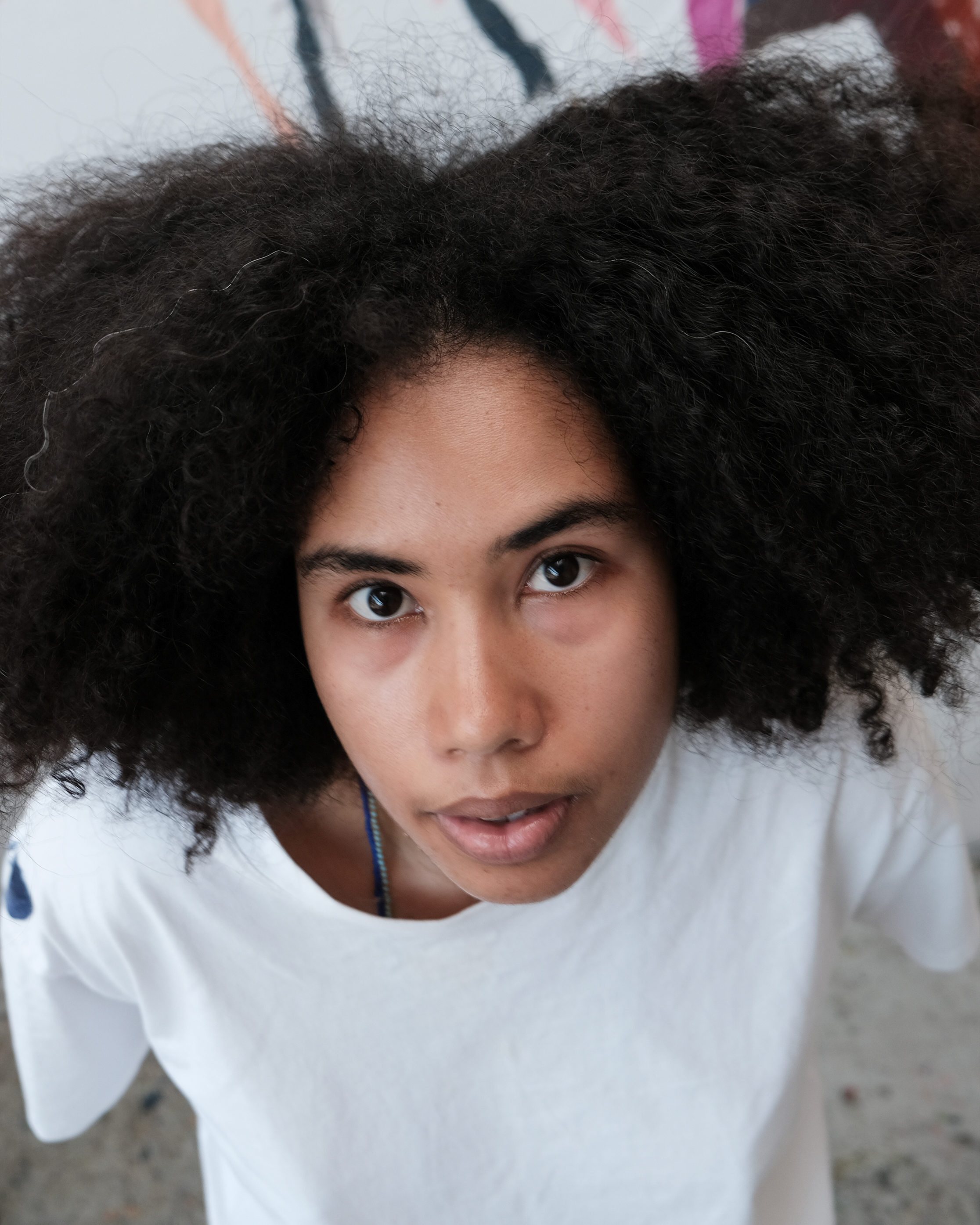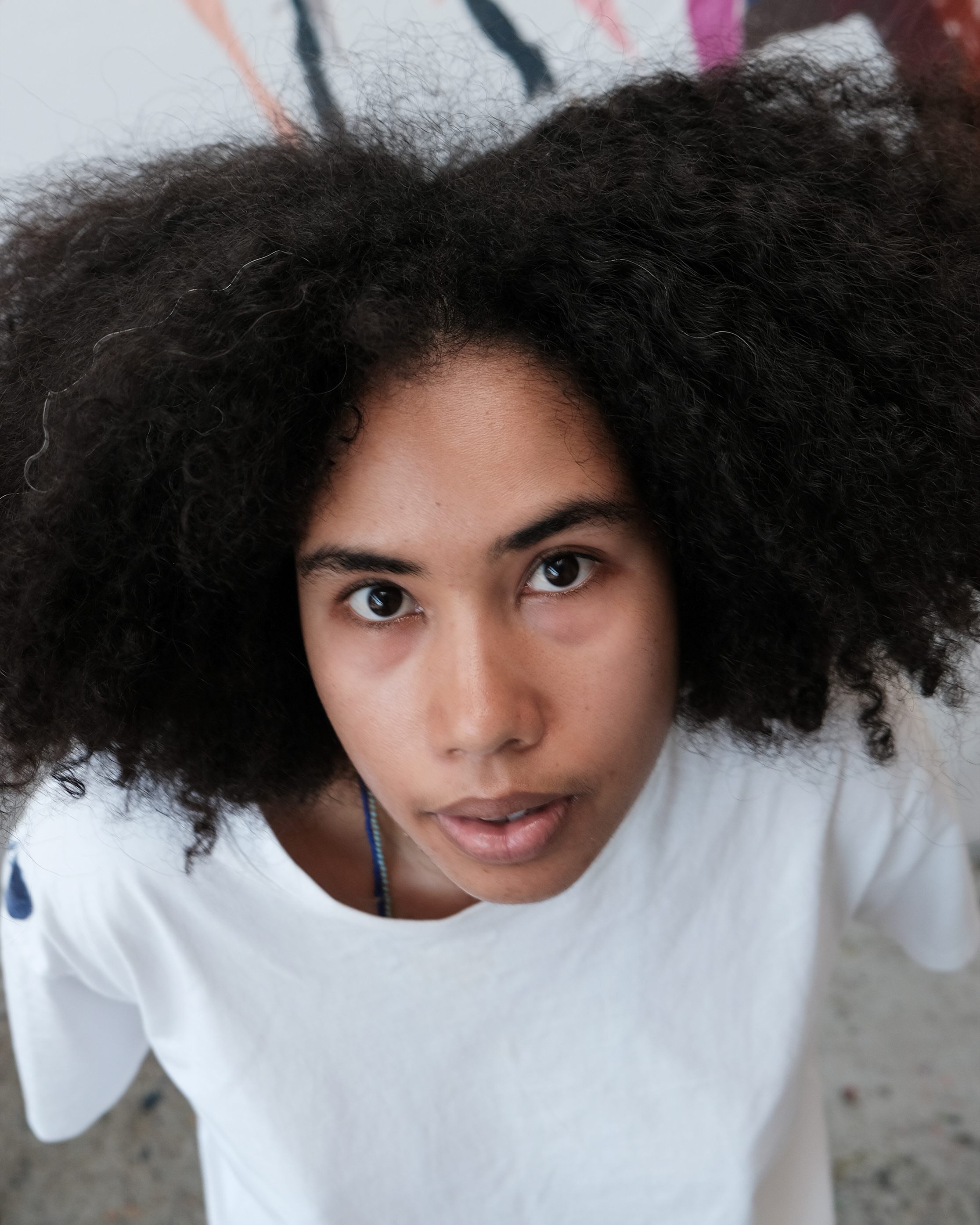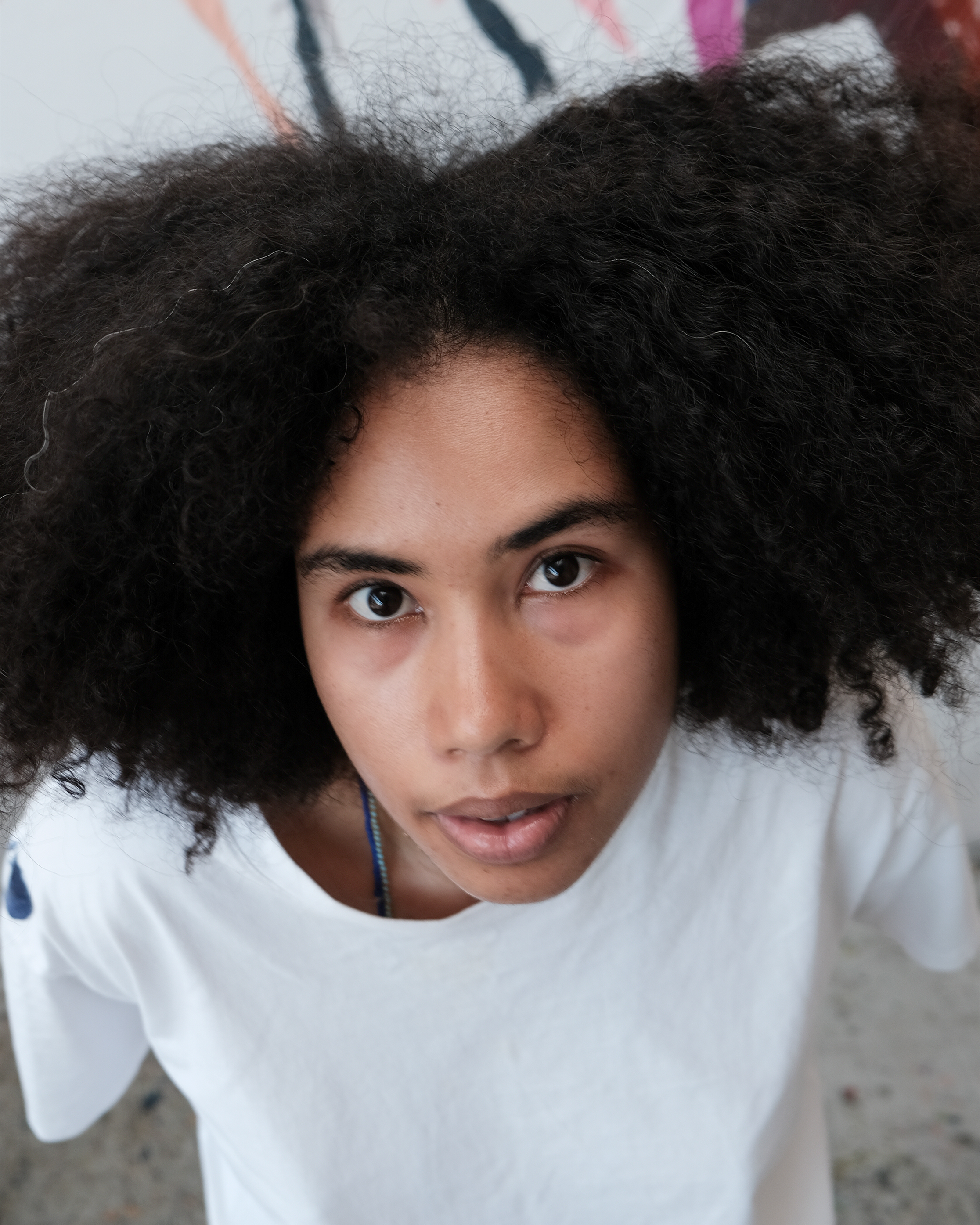“Alvorada” Curated by Sophie de Mello Franco
The exhibition presents the work of five Brazilian artists exploring themes of cultural resilience, memory and formal exploration across painting, photography and site-specific installations. Brought together through a deep observation of the everyday, their practices offer a gaze under a new light: a perspective at the brink of dawn. Antonio Társis’ installation in the historical staircase, composed of matchboxes and strings of charcoal, transforms a ubiquitously forgotten object into a vessel of memory. While the object has been dyed, disassembled and destroyed, the latency of its igniting past remains.
In the north entrance, Luisa Matsushita’s paintings evoke an equilibrium of forces. Much like child’s play (Gangorra, Seesaw), the compositions capture the push and pull of perpetual circularity. Through the Rose Bakery, the Retratistas do Morro: Afonso Pimenta and João Mendes reveal an intimate visual chronicle of daily life in Aglomerado da Serra, one of Brazil’s largest favelas. Their photographs from the 1970s and 80s preserve moments of resilience, dignity, and community memory.
In the subterranean cave, Ana Claudia Almeida’s unstretched canvases float in space, like a body in the process of awakening—neither fixed nor at rest, but inhabiting a liminal state of becoming. Curated by Sophie de Mello Franco and produced by ORFEO 0112, the exhibition unfolds across Dover Street Market Paris from 20th of October to 13th of November 2025.
ANTONIO TÁRSIS
B.1995, SALVADOR, BRAZIL
LIVES AND WORKS IN SALVADOR and LONDON
Antonio Társis was born and raised in Salvador. A self-taught artist, he investigates materials such as matchboxes, fruit crates,
charcoal, and electronic waste. His works disassemble and recompose these remnants to reveal the layered histories, violences, and social tensions embedded within them. Moving beyond personal or geographic narratives, Társis explores broader dynamics of extraction, destruction, and circulation. Through these processes, he transforms fragments of industry into poetic structures that reflect on colonial legacies, economic hierarchies, and the ways historical narratives inscribed in materials continue to shape contemporary culture.
RETRATISTAS DO MORRO
COLLECTIVE: JOÃO MENDES / AFONSO PIMENTA
LIVE AND WORK IN BELO HORIZONTE
The Retratistas do Morro project, founded in 2015 by visual artist, researcher, and cultural activist Guilherme Cunha, is dedicated to preserving Brazil's cultural and artistic heritage. Its mission is to champion the recognition of a movement of artists who have historically lived and worked in the favelas, creating images through photography since 1960. The movement's two foremost representatives are artists João Mendes and Afonso Pimenta. For over six decades they have been portraying the daily life and capturing the affective memories of the residents of Aglomerado da Serra, one of Brazil's largest favelas, located in Belo Horizonte.
In a context where symbolic inequality—the disparity in representation through imagery—is as acute as social inequality, they found a means to fill a void in the national collective imagination. Their work gives visibility to entire populations whose images have been rendered invisible for centuries. These photographs present us with a vision of a possible world where all people have an equal right to exist and express their subjectivities.
LUÍSA MATSUSHITA
B 1984, SÃO PAULO, BRASIL
LIVES AND WORKS IN SÃO PAULO
With a multidisciplinary and self-taught background, Luísa Matsushita is a visual artist and musician. She has been developing her pictorial practice since 2013 and currently lives and works in São Paulo. She is a founding member of the feminist band Cansei de Ser Sexy, which revolutionized the national indie pop scene in the early 2000s. Through vivid pictorial compositions, Luísa Matsushita's painting follows a path toward the minimal and the elementary. Constantly focused on fragments of everyday reality, her gaze seeks to relax the visuality of trivial elements. With precise use of color, she explores the relationships present at the boundaries between one tonal layer and another, capable of giving individuality to each of her works. In her practice, painting is realized to the extent that it presents itself to the world as an autonomous entity, almost personified, and imbued with a sense of humor.
ANA CLAUDIA ALMEIDA
B.1993, RIO DE JANEIRO, BRAZIL
LIVES AND WORKS IN NEW HAVEN AND RIO DE JANEIRO
The material universe of Ana Cláudia Almeida is established through the manipulation of paint, plastic, oil stick, fabric, and image. The fluttering quality of her works on fabric, the accumulative and shifting character of the sculpture, and the kaleidoscopic fragmentation of her large-scale paintings transpose and translate intangible memory into matter. This dimension is felt both on the surface of the works, as Almeida allows traces of previous gestures to remain in the final form, and in a conceptual and symbolic way. Made of intense superimpositions of full and empty spaces, the abstraction that resonates in her work formally and thematically reflects layers of memory, practices, and rituals. Moving between painting, sculpture, and video, Ana Cláudia Almeida’s production confronts the ways she is shaped — or distorted — by social structures, exploring the frictions between the urban environment and systems such as religion, gender, and sexuality.
